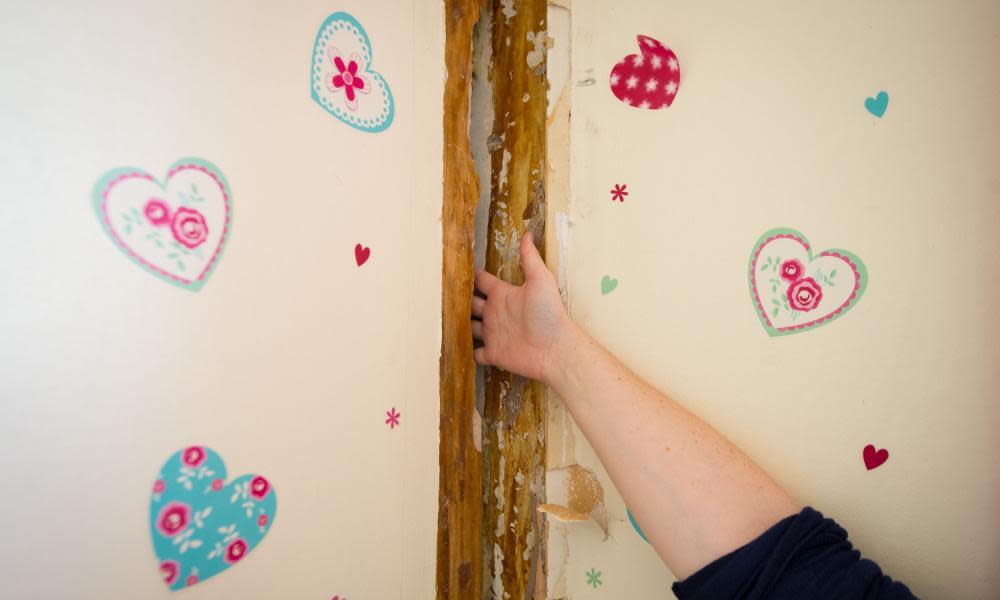The way residents and tenants are treated is a stain on modern Britain

Following the news in 2017n has been like riding an out of control rollercoaster. As soon as one story dissipates, another rears its head
with little chance to analyse and contextualise anything that occurs.
Take the news about housing: after the shocking tragedy of Grenfell Tower, an eyewatering number of tower blocks were revealed to have similarly unsafe cladding as the government fire tested samples sent in by councils and housing associations.
The statistics caused huge alarm: the Chalcotts Estate in Camden was evacuated when it was discovered the panels fixed to the new-build towers were the same as those fitted to Grenfell Tower, which are believed to have contributed to the speed and scale of the blaze. Scarcely had politicians and the public begun to discuss what this meant for the culture of housing and redevelopment across Britain, when another story broke.
The Ledbury estate in Peckham was found to be at significant risk of collapse in the case of a gas explosion. Believing the residents to be in immediate danger, Southwark council began evacuating.
In 1968, in Ronan Point tower in Newham, east London, four people
died and 17 were injured when a gas explosion caused load bearing walls to collapse as the bolts holding together large prefabricated panels
buckled. The image of the tower was stark. From the roof to the floor,
an entire corner had fallen in, like dominos. That the fatality count
was as low as four was a miracle in itself. The collapse caused huge
concern for tower block residents, and the system then used to join the
concrete panelling was outlawed and building regulations changed to
ensure tower block architecture was safer and more robust.
The Ledbury estate was constructed using the same method as Ronan Point but residents were told that the problem had been fixed.
Southwark commissioned a fire safety inspection after residents raised concerns following the Grenfell Tower inferno, and it was discovered that, somehow, the flawed construction method had never been rectified. So for decades, the tower was at risk of the same fate as Ronan Point. It’s unclear how this oversight occurred. But a similar tale emerges: residents had been complaining of safety risks for years before this life-threatening danger was revealed.
Housing costs, supply and a dearth of social housing are cited often as the main issues in the UK’s housing crisis. But how we treat residents and tenants is a stain on modern Britain. The Ledbury and Grenfell residents were repeatedly dismissed when they raised concerns.
People constantly contact me panicked when they are turned away illegally by council housing offices or have issues with damp, leaks, cockroaches and rodents in their homes, endangering their children’s health. In the past few weeks, several women have kept me updated with their treatment after the roof of their Notting Hill Housing Trust domestic violence refuge collapsed. The women had complained for weeks that the sprinkler system was leaking into the ceiling, with little response. When the ceiling collapsed, they were told they’d be moved from Kensington to Barking, where several of their violent ex-partners live.
Since, some of them have been in temporary accommodation. One was placed in a hostel staffed entirely by men and when she caught someone photographing her
through a window, found the manager of the hostel and the housing staff at Kensington and Chelsea council dismissive until a police officer contacted the council on her behalf and pressured the department to move her to more appropriate accommodation.
In the meantime, the stress had caused her post-traumatic stress disorder to
escalate to the point where she was admitted to a psychiatric unit. Prior to the roof collapse she’d felt close to recovery.
Housing associations and councils must accept they have a duty to uphold human dignity and treat residents as they would their friends and neighbours rather than like human detritus. Meeting housing association chief executives, I’m struck by the earnest way in which they speak of their work and how they argue we need to give homes to all who need it and remove the stigma social tenants face. Yet the tales their tenants tell do not match their words.
Some councils are rotten, and so too are some housing associations. Staff on the frontline must do more to genuinely listen and act on the complaints and needs of residents, and less on honing the corporate exterior gloss.
Sign up for your free Guardian Housing network newsletter with comment and sector views sent direct to you on the last Friday of the month. Follow us: @GuardianHousing
Looking for a housing job, or need to recruit housing staff? Take a look at Guardian Jobs.

 Yahoo News
Yahoo News 
